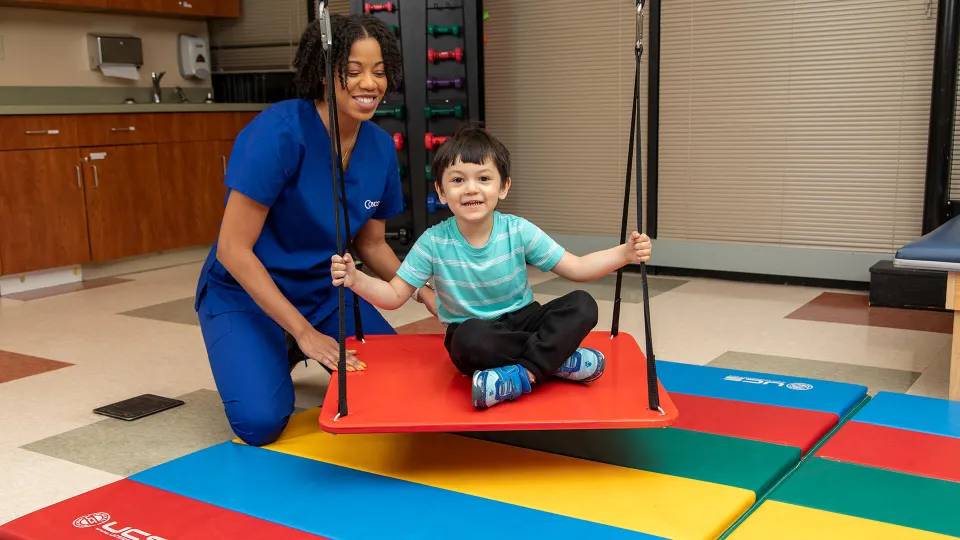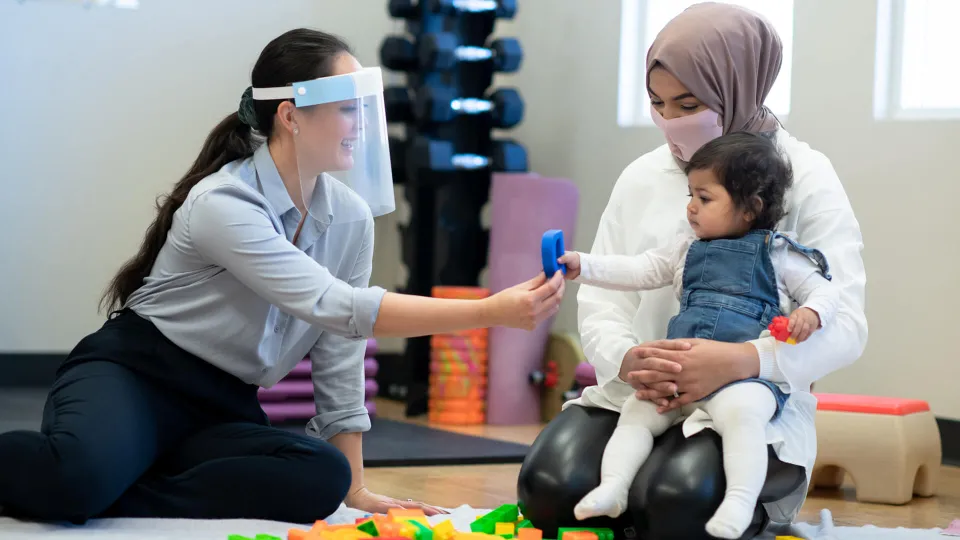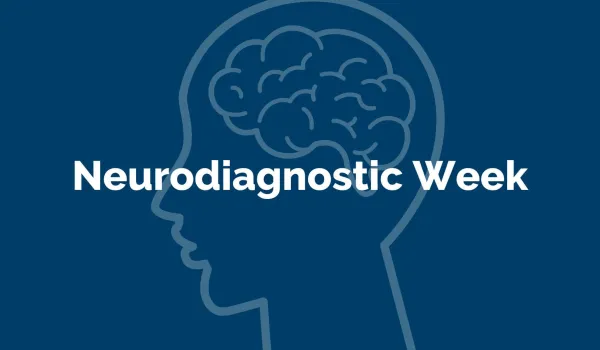Concorde Staff

Occupational therapy is a growing field offering career opportunities for those interested in helping people achieve goals and improve their quality of life. You may have heard about an occupational therapy assistant (OTA) but wondered what does an occupational therapy assistant do?
This trained professional assists an occupational therapist (OT) in helping individuals of all ages and abilities participate in the activities of daily living that are important to them. For example, this support can include helping a child with autism improve social skills to assisting an older adult with arthritis to maintain independence. Learn how to become one and the areas of practice this individual serves.
What Does an Occupational Therapy Assistant Do?
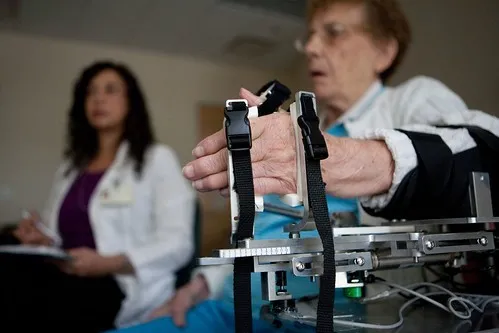
Why Would Someone Need Occupational Therapy?
An occupational therapy assistant helps individuals participate in daily living activities, such as washing and grooming, feeding oneself, and shopping. Occupational therapy assistants help patients accomplish these tasks using a holistic approach. They may assist in evaluating all aspects of an individual's condition using physical and cognitive evaluations. Occupational therapists manage these assistants. Assistants may not be able to perform all duties associated with occupational therapy and may refer to their manager for some types of patient care. Occupational therapy assistants may help to improve function in the following areas:
- Mobility: Occupational therapy can help improve range of motion, balance, and walking ability. These professionals may assist during dry needling and occupational extremity exercises to promote a patient's muscle strength and joint mobility.
- Pain and emotional wellness: Occupational therapy assistants may use assistive splints and gait and balance trainers to improve a person's ability to sit up or lift a foot. They may also work with patients of all ages dealing with physical or emotional injuries.
- Cognitive function: To help patients with cognitive challenges, these professionals may assist in the use of techniques such as neurofeedback, biofeedback, and treatment interventions to spark the brain's ability to increase cerebral blood flow and minimize pain.
- Psychiatry: Occupational therapy assistants receive training to work with individuals suffering from psychiatric disorders such as bipolar disorder and depression.
In addition to these duties, these professionals often complete several required tasks when working with patients:
Reviewing Patient Medical Histories
Occupational therapy assistants may help their manager take a thorough medical history of each patient. They assist in reviewing this medical history with the patient and the individual's family members to ensure they understand how the patient feels and functions. This medical history review helps the occupational therapist and occupational therapy assistants develop a plan of treatment that focuses on the specific tasks that are most problematic. Using a holistic approach, occupational therapy assistants may help patients learn new techniques and test new goals.
Assessing Patient Environments
Occupational therapy assistants spend much of their time in education settings and want to ensure that patients receive support for their needs in these settings. They may help ensure that a client has access to necessary resources for daily living and safe environments without hazards or trigger points for anxiety. They also may assist their team in verifying that their clients' medications are being taken as prescribed and do not create hazardous side effects.
Evaluating and Treating Patients
Occupational therapists seek to treat problems holistically, which means they evaluate the causes of symptoms rather than treating one symptom at a time. For example, an occupational therapy assistant may be present to examine an older adult for arthritis. The occupational therapist is the one who may prescribe joint strengthening exercises to help ease the symptoms in addition to pain medication.
Interpreting Assessment Data
Occupational therapy assistants may help their managers analyze assessment results to ensure that their clients are progressing according to plan. They may also take interim measures to help patients, such as recommending compensatory strategies, until they can reach a predetermined goal with their patients and team.
Reviewing Progress
Occupational therapy assistants can carefully review new goals with patients and adjust treatment plans accordingly with their manager. They may also help patients develop behavior modification techniques and techniques to deal with cognitive challenges. For example, occupational therapy assistants (1) may work with patients who complain of back pain to establish activity modifications based on their needs.
How To Become an Occupational Therapy Assistant

How To Become an Occupational Therapy Assistant
Follow this step-by-step guide to becoming an OTA:
1. Research Concorde's Occupational Therapy Assistant (OTA) Program
Concorde Career Colleges' OTA program is accredited by the Accreditation Council for Occupational Therapy Education (ACOTE) (4) and prepares students for careers as successful occupational therapy assistants. You may complete our program and earn an associate degree in as few as 21 months.
2. Apply For and Enroll In Our OTA Program
First you must apply for the program, then once you have met the program requirements, you can enroll in the OTA program. Concorde offers a flexible schedule for students in Miramar, Florida, and Memphis, Tennessee.
3. Complete Our OTA Program
You will have the opportunity to complete coursework, clinical experiences, and fieldwork during the program. You will learn about assessing and treating patients with various conditions and disabilities. Concorde's program includes hands-on training in diverse settings, including hospitals, schools, and rehabilitation centers.
4. Pass the National Board for Certification in Occupational Therapy (NBCOT) Exam
After completing the OTA program, you will need to pass the NBCOT exam (2) to become a certified OTA. Concorde prepares students for the exam through review courses and practice tests.
5. Obtain a State License
In addition to certification, you will need to obtain a state license to practice as an OTA. Each state has licensing requirements, so it is essential to check with your state's regulatory board. Concorde offers information about state licensure requirements to OTA program candidates.
6. Start Your Career as an OTA
Once you have completed the OTA program, passed the NBCOT exam, and obtained your state license, you can pursue your career as an OTA. Concorde's career services team can assist with career search information and networking opportunities.
Concorde's OTA program provides students with the opportunity to learn and practice the knowledge and skills to become successful occupational therapy assistants. With a focus on hands-on training and comprehensive coursework, graduates are well-prepared to pass the NBCOT exam and begin their careers in the field.
Areas of Practice

Where Do Occupational Therapy Assistants Work?
Occupational therapy assistants work in various settings and specialize in many practice areas:
Children and Youth
Occupational therapy assistants who work with children and youth help them to develop the skills necessary to participate in the activities of daily living that are important to them. This work includes developing social and motor skills, for example, through learning how to ride a bicycle or play with other children.
Adults
Occupational therapy assistants can work with older adults with physical and cognitive challenges. For example, many older adults have difficulty remembering how to use the bathroom alone, so an occupational therapist may help teach them how to do so safely and effectively.
Geriatrics
Another area of occupational therapy practice is working with older adults with dementia or other chronic conditions. Therapy assistants may use neurofeedback, biofeedback, or acupressure techniques to improve their patients' abilities.
Education and Schooling
Occupational therapy assistants can work with children with learning disabilities and those with attention deficit hyperactivity disorder (ADHD) or autism. They may also work with children with chronic medical conditions or for whom setting and tone are challenging. Professionals in this practice area may work directly with one or a few students throughout the day to help them succeed.
Mental Health
Some occupational therapy assistants choose to enter the mental health care industry. This work may include connecting with individuals who struggle with mental health issues, including depression and bipolar disorder. These professionals may help patients learn how to cope with their mental health while obtaining employment or securing a reliable income.
Rehabilitation and Disability
Similarly, some occupational therapy assistants choose to work in rehabilitation settings and help patients dealing with physical, psychiatric, or cognitive challenges. These professionals may work closely with other medical professionals to help patients learn how to perform activities of daily living, such as bathing and dressing.
Work and Industry
Some occupational therapy assistants choose to work for the federal government or large corporations. They work in automobile manufacturing, pharmaceuticals, and food production settings. Duties can include collaborating with professionals who perform physically challenging positions, such as jobs that require lifting heavy items. These professionals may help people with physical difficulties (3) maintain their ability to work.
Explore more information about Concorde's accredited Occupational Therapy Assistant program and pursue a new career in patient care.
Interested In How To Become an Occupational Therapy Assistant?
Click here to explore Occupational Therapy Assistant Programs near you!
Footnotes:
1. "Occupational Therapy Assistants and Aides," https://www.bls.gov/ooh/healthcare/occupational-therapy-assistants-and-aides.htm
2. "NBCOT Occupational Therapy Certification," https://www.nbcot.org
3. "20+ Occupational Therapy Specialties to Advance Your Career," https://www.usa.edu/blog/occupational-therapy-specialties
4. "ACOTE," https://acoteonline.org
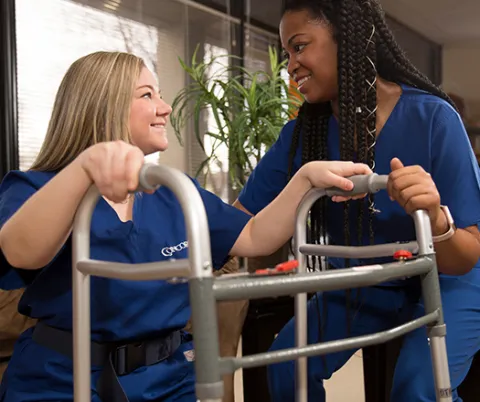
Take The Next Step Towards a Brighter Future
Interested in learning more about our Occupational Therapy Assistant program? We have a Concorde representative ready to talk about what matters most to you. Get answers about start dates, curriculum, financial aid, scholarships and more!
